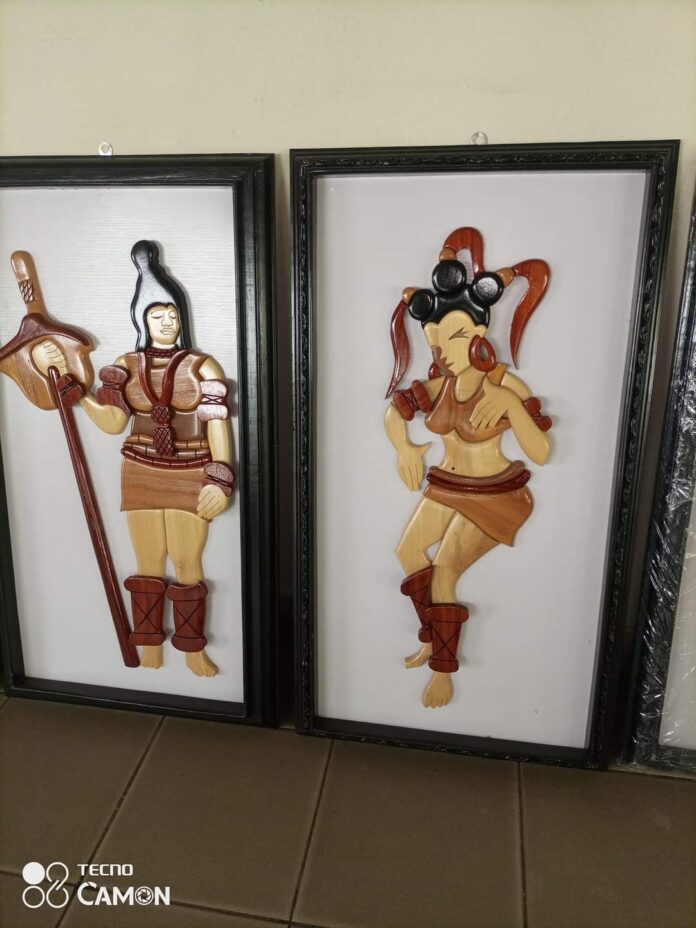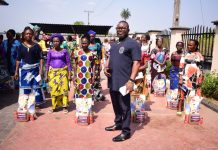Foremost, Ekömbi, like the Scriptural Moses, simply means ‘drawn from the waters’, hence its marine/aquatic origin and nature by definition and/or description. Every other thing said to garnish its image merely subsists to extol its cosmo-mythic, religious or sociocultural virtues/values in reality or abstract; as witnessed/ imagined by initiates and non-initiates (Hogan, 2023).
Similarly, let’s look at the Efik word UKARAKPA. It etymologically comes from the corruption of marriage between UKARA (Rule[r]) and AKPA (RIVER), where SEA is rightly called INYAÑ IBOM or AKPA INYAÑ IBOM/UTUÑÖ MMÖÑ if referring literarily to the OCEAN. Therefore UKARAKPA directly translates from its etymology to the River god[dess], Sea or Ocean Ruler, King or Governor; suggesting aqua regality, imperialism, dominion or territoriality in context. But it is precisely the Efik name for deistic ANACONDA, otherwise nicknamed [O]KUKUBARAKPA, coined from Oku[ku] ( chief priest) and Ubara Akpa ( rugged/blunt side of the Sea/ocean that is often overwhelmingly seen when viewed from the sea chest.
However, note aside that it is mythologically believed that it was/ is often for this perceived reason that Mbarakpa, coined from the corruption of Mbuba [ke Ubara] Akpa, the Efik word for Regatta hitherto subsisted by the wisdom of the ancestors to equally mean a traditional River or sea-funfare iorganized yearly in honour of the water deities under the watch of an Oku Ibom/Oku Ndem Efik Iboku, which in modern use, infers the Öböñ of Calabar/ Chief priest of the land.
Above premises, in tandem with our previous establishment of Ekömbi as Idem, Ekara, Nsibidi and Mkpoto (for those who hitherto followed this series of expository essay from onset), further infer Ekömbi as one which beyond ordinary theatrical appreciation as a social dance, commands the unseen presence of the ruler(s) of the Sea/Ocean.
This again, implicitly asserts Ndem’s theophanic presence and essence at the helm of ancient Efik polytheism, spiritism/ triumvirate belief in Ndem, Mbukpo and Ekpe as key rulers of Efik cosmos and tripodal connecting links between God, nature and man; including their collective roles as nexus between religion, history, culture, tradition, customs and society.
Put simply and in context, aside being spiritually or physically seen to have Akpa (River/ Sea tidal, rhythmic or grandeurous) movement in form and shape, initiates understand better that behind every original Ekömbi itiat Ntokon dance for the gods or Ndem worship is an UKARAKPA or Anaconda at the background of every serpentine twist and turns in the dance.
This fact, in conclusion, aligns with the thoughts that while places like India see the Cobra as symbol of the god[dess] manifestation in physical form for humans’ good or evil, away from its ordinary conception as a snake, the Efik, from the ancients, have always symbolized Ndem as Python or Anaconda. Nevertheless, Efik in some cases acknowledge cobras as Ndem’s agents, depending on which Idem/Ndem is involved and why it is involved.
*All Rights of Copy Reserved by the Author in Law and the Print. Don’t plagiarise, copy, reproduce, adapt, store or utilize in scholarship or for commercial purpose, without the author’s written consent, approval or due acknowledgements if shared, cited or referred in any work.









